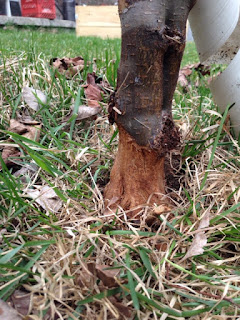 |
| Sweet Slice Burpless |
A member of the gourd family, the noble cucumber (Cucumis sativum) was cultivated in India over 4,000 years ago. In 1494 it arrived on the shores of Haiti courtesy of Italian explorer Christopher Columbus. In the early 1500's there is evidence it was traded and grown in Montreal, Quebec, Canada by explorer Jacques Cartier. Today, cucumbers are grown around the world with China holding the
gold medal for the greatest production.
In general terms, cukes are either pickling, slicing or bitterless types and available in a myriad of varieties due to cross breeding. As you may know, cukes take lots of room in the garden so growing them on a trellis is a great idea for urban gardeners.
Pick a sunny part of your garden and start with preparing the earth with compost or organic fertilizer (triple-mix is ideal) and wait until the outdoor temperature warms up before planting your seed. Cukes will not germinate in cold soil so wait until the end of May or first weekend in June (Ottawa, Canada). If you rush them they don't grow and get stunted. Another option is to germinate the seeds indoors using
soil blocks (as demonstrated by the Floret Flowers blog in Mount Vernon, Washington) or use
Jiffy-7 peat pellets 2-3 weeks before transplanting outdoor. If you purchase plants at the local nursery, carefully plant the whole tray in one location as cukes don't like to have their roots disturbed. Water and work the soil well before planting.
 |
| Growing vertical in a small space |
When growing on a trellis I overseed them in a row and then cull the weakest plants. The strongest plants should be approximately 6"-8" apart. When they start to grow I help them grow vertically by wrapping the tendrils (green curly arms) around the trellis. Once they get going they will find their way up the trellis. For the past few years I have been using the concrete wire fence in photo,
available at Home Depot, supported by a few bamboo poles. Otherwise you can use jute twine (biodegradable) or nylon fishing twine to create vertical support.
One of my favourites is
Sweet Slice available at Stokes Seeds. It is a burpless type that you can eat with the skin. Just try it! Wash it, close your eyes, eat it and you can't tell the difference. Another interesting variety is the smaller, sweet tasting, virtually seedless and smooth/thin skinned
Lebanese cucumber. The reason cukes are so refreshing is the 96% water content making them also low in calories. In addition they contribute to a recommended daily requirement of Vitamin K.
"Stay cool as a cucumber", my friend.
















